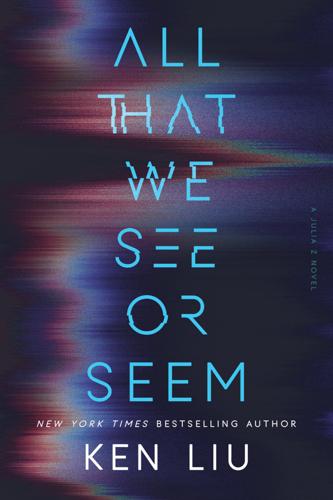Ken Liu’s latest novel, All That We See or Seem, invites readers to ponder the implications of artificial intelligence on creativity and identity. Published by Saga and spanning 405 pages, the book presents a thought-provoking narrative that revolves around the disappearance of an artist named Elli. As the story unfolds, it acts as a metaphorical exploration of the human soul and the essence of humanity in an increasingly technology-mediated society.
The protagonist, a hacker known as Julia Z, embarks on a mission to locate Elli, who has vanished under mysterious circumstances. Julia, a runaway seeking anonymity, embodies the struggle against a world dominated by surveillance and digital control. Her quest for Elli becomes intertwined with a deeper search for her own identity in a landscape where individual presence is often overshadowed by technological oversight.
Ken Liu, recognized for his translations of Chinese science fiction, including The Three-Body Problem, crafts a near-future world that feels both familiar and unsettling. In this reality, personal AIs termed “egolets” augment human capabilities. These egolets assist artists like Elli in creating shared experiences, offering not just entertainment but also therapeutic support. The novel raises significant questions about the ethics of artistic expression in an age where technology can replicate and manipulate creativity.
Art and Technology: A Complex Relationship
Liu presents a dualistic view of technology’s role in creativity. On one hand, there is an optimistic vision where AI enhances human artistic expression. On the other, the narrative reveals a darker side, highlighting the manipulation of digital media. The prevalence of faked photographs and the erosion of trust in visual evidence create a chilling atmosphere where criminals exploit technological vulnerabilities.
The character of the villain, a tech magnate known as The Prince, exemplifies the corrupting influence of power in the digital age. His ability to control the virtual landscape allows him to profit from artists like Elli while exploiting their talents. Despite his wealth and influence, The Prince views Elli, a less commercially successful venture, as his most significant creation. This relationship underscores a central theme of the novel: the commodification of art and the artists themselves.
Julia’s journey through a society rife with surveillance illustrates the struggle for autonomy in a world where every action is monitored. Her desire to remain undetected becomes a broader commentary on the survival of the unrecorded self amid pervasive digital scrutiny.
The Search for Identity
While Liu’s narrative is rich with philosophical inquiry, some characters, including The Prince, risk feeling one-dimensional. The plot occasionally hinges on improbable coincidences, such as Julia’s lucky escapes from surveillance. This focus on thematic exploration sometimes overshadows the characters’ development, making their motivations appear secondary to the overarching ideas Liu wishes to convey.
Elli’s disappearance serves as a powerful act of defiance against The Prince. Through her journey, she leaves behind clues that reveal her desire for self-discovery beyond mere artistic recognition. Liu deftly questions the nature of creativity and identity, particularly as AI increasingly mirrors human expression. He poses a crucial inquiry: when AI replicates our art and thoughts, what remains of our individuality?
The resolution of the novel, while engaging, introduces elements that may feel overly patriotic, suggesting a reaffirmation of American values in the face of technological authoritarianism. This narrative choice raises important questions about how ideals of liberty and personal freedom will endure in an era dominated by AI.
Liu’s exploration of the human experience amid technological advancement reveals significant insights into the artistic psyche. The desire for control over another’s success can provoke a crisis of self-worth in artists, challenging their independence and creativity.
In conclusion, All That We See or Seem is not just a tale of a missing artist but a compelling reflection on the intersections of art, technology, and identity. While the novel grapples with profound questions, a deeper engagement with character development could enhance its impact. Liu’s work encourages contemplation about the future of creativity as AI continues to evolve, leaving readers to ponder the essence of what it means to be human in a rapidly changing world.
